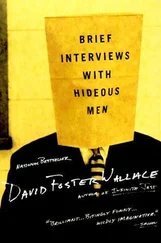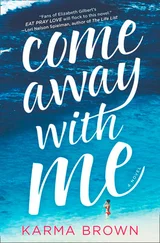Scott MacDonald - A Critical Cinema 2 - Interviews with Independent Filmmakers
Здесь есть возможность читать онлайн «Scott MacDonald - A Critical Cinema 2 - Interviews with Independent Filmmakers» весь текст электронной книги совершенно бесплатно (целиком полную версию без сокращений). В некоторых случаях можно слушать аудио, скачать через торрент в формате fb2 и присутствует краткое содержание. Год выпуска: 1992, ISBN: 1992, Издательство: University of California Press, Жанр: Прочая документальная литература, на английском языке. Описание произведения, (предисловие) а так же отзывы посетителей доступны на портале библиотеки ЛибКат.
- Название:A Critical Cinema 2: Interviews with Independent Filmmakers
- Автор:
- Издательство:University of California Press
- Жанр:
- Год:1992
- ISBN:9780585335100
- Рейтинг книги:3 / 5. Голосов: 1
-
Избранное:Добавить в избранное
- Отзывы:
-
Ваша оценка:
- 60
- 1
- 2
- 3
- 4
- 5
A Critical Cinema 2: Interviews with Independent Filmmakers: краткое содержание, описание и аннотация
Предлагаем к чтению аннотацию, описание, краткое содержание или предисловие (зависит от того, что написал сам автор книги «A Critical Cinema 2: Interviews with Independent Filmmakers»). Если вы не нашли необходимую информацию о книге — напишите в комментариях, мы постараемся отыскать её.
A Critical Cinema 2: Interviews with Independent Filmmakers — читать онлайн бесплатно полную книгу (весь текст) целиком
Ниже представлен текст книги, разбитый по страницам. Система сохранения места последней прочитанной страницы, позволяет с удобством читать онлайн бесплатно книгу «A Critical Cinema 2: Interviews with Independent Filmmakers», без необходимости каждый раз заново искать на чём Вы остановились. Поставьте закладку, и сможете в любой момент перейти на страницу, на которой закончили чтение.
Интервал:
Закладка:
Three or four years ago I rotoscoped David Bowie.
MacDonald:
How did that happen?
Breer:
Pennebaker asked me to do it for that film he made with Bowie in his last incarnation as Ziggy [
Ziggy Stardust and the Spiders from Mars,
1983]. I did some sample sequences that were sent to Bowie, who liked them, though as things turned out that material was never used. But at one point Bowie decided he wanted to learn animation and wanted me to teach him. Pennebaker sent him a tape of my films and Bowie's ten-year-old son ended up using
Fuji
to teach himself how to animate.
MacDonald: Fuji
seems the most conventional narrative you've done. We experience a particular, chronological train ride. Did you shoot the original footage of that trip with this film in mind?
Breer:
No. I had a neat little fifty-dollar Super-8 Kodak camera, which I still use. The handle folds up, and you can slip it in your pocket. A no-focus, idiot camera. I shot the footage out the window of the Tokaido Express, a 135-mile-an-hour train. You can't go to an exotic place like Japan and not record your trip to show the folks, so that's what it was, just a mindless bunch of footage out the window, without the possibility of refined focus and with no thought of the future. I didn't dig that film up until three years later when I was fishing around for an excuse to do some more rotoscoping. What attracted me to the footage was the mountain in the background and the possibility for motion perspective in the foreground. The film plays with deep space and the flat picture plane of the screen.
Page 47
MacDonald:
Maybe what makes
Fuji
seem more conventional than the other films is the sound of the train, which is more continual than the sound in many other films, and has a clear, direct relationship with the visuals.
Breer:
The sound was put on six months after I finished the film. Actually, I showed
Fuji
in Pittsburgh as a silent film and realized there that maybe it should have some sound. I used all kinds of contraptions in my studio to create the train ride noises. Of course the Tokaido Express doesn't sound anything like my clackity clack, but the soundtrack does evoke "train," and it's the rhythm I thought I needed for that film. One trick that I was real happy with is the interruption of the sound near the end. After using the relentless clackity clack at various paces and pitches, I stopped it right at the climax of the film, or I should say I created the climax of the film with this sudden drop into total silence. Then just at the end the sound creeps back in as a little coda, and we see the person on the train [Frannie Breer] in live action. I withheld the sound in a couple of other places too.
MacDonald: Rubber Cement
uses a lot of collage; it seems a return to the sensibility of
Fist Fight
or
Jamestown Baloos
.
Breer:
I hadn't thought of that. I do have a tendency to pick up on neglected practices. It's possible that I had become collage starved.
MacDonald:
How did your involvement with Xerox in
Rubber Cement
come about?
Breer:
I was invited to be a member of a seven-member NYSCA panel that was formed to give artists access to Xerox machines. Part of the privilege of being a panelist consisted of getting an identity card to go into the Xerox Company. They'd just come out with a color machine. I had to share the time with some of the artists we selected: Bob Whitman was one and Steven Antonakis another. Anyhow, I didn't have a lot of time on the machine, but I generated a bunch of images by playing around with frames from some of my old films (
70,
for one). I was hoping that if Xerox looked at my film, they might think I was worthy of a little more indulgence, but I had a negative reaction from their PR people; they weren't even curious to see the film. So when I realized later that I had misspelled the company name in my title tribute, "Thanks to Zerox," I was happy to leave it that way.
MacDonald: 77
is in the mold of
69
. Like the earlier film, it explores color: the early part centers rigorously on primary colors, then at the end there's a dispersal of that control into a crescendo of color.
Breer:
I intended to make a black-and-white film, to reduce elements and simplify everything. But DuArt informed me that it would cost more to shoot in black and white than in color. I had always secretly admired the effect of black-and-white images in color film, and this
Page 48
discovery made it easy for me to decide to shoot on color stock. Then I thought, it's a shame not to let the stock see some color once in a while. I had thousands of black-and-white images, and the idea of now adding color to the images had coloring book qualities I didn't think too highly of: the color would have had a passive, ornamental role. My answer was to add color to the film by hand, which I'd done once before, in
Eyewash
. Only this time I decided to hand color the original. What this means in an animated film is that if you screw up and overpaint, you're undoing weeks of work. You can't correct. It was a situation I liked, a challenge to the predictability of my techniques. It heightened the intensity of making the film. It was a way of reversing the usual progression toward greater control and less risk. I hoped some of my excitement would rub off on the whole film. In the same spirit, I spray painted the ending of
LMNO
a year later. I looked at
77
the other day and thought that, while the film does have a mix of extreme control and some out-of-control stuff, there's too much of the former.
MacDonald: LMNO
(and
TZ,
too) uses a lot of sexual imagery, more than most of the other films.
Breer:
In
LMNO
there are these tiny objects that rain across the screen from top to bottom. Some look like sets of cocks and balls. The others look like upside-down coffee cups. The origin of those is pretty complicated. They were made with rubber stamps sent to me by Claes Oldenburg, one ordinary rubber stamp very carefully divided down the middle. One side had this giant lipstick on it (in the scribble form it looks like cock and balls, which is typical of Oldenburg: he's always dealing in phalluses and so forth); the upside-down coffee cup shape doesn't quite fit as the opposite of his phallusit's not quite the vagina shape, but it relates. Anyhow, I play with those shapes in
LMNO
and in
Rubber Cement
.
Those rubber stamps were the culmination of a drawing contest Oldenburg and I had during a period when we both were having sculptures made up in a big sculpture factory in Westhaven. Mine was a big float, now in Stockholm, that you can sit on and ride. Every time I'd go up there there'd be a drawing of his lipstick on caterpillar treads; it looked like a tank and was aimed aggressively at a sketch of my coffee cup-shaped "rider float." I had to retaliate with a drawing that had my float getting underneath his sculpture and driving off with itmy point being that my sculpture was motorized and really worked, while his only
looked
like it would move. When I came back the next time, I found a drawing of the two of these things going over a cliffhis point being that while my float was motorized, it didn't know where it was going. At the bottom of the cliff, the lipstick is stuck in the ground and the treads are up in the air. My sculpture was cradled in the treads of his as though on a pedestal of his sculpture, and there was a guy standing there scratching
Читать дальшеИнтервал:
Закладка:
Похожие книги на «A Critical Cinema 2: Interviews with Independent Filmmakers»
Представляем Вашему вниманию похожие книги на «A Critical Cinema 2: Interviews with Independent Filmmakers» списком для выбора. Мы отобрали схожую по названию и смыслу литературу в надежде предоставить читателям больше вариантов отыскать новые, интересные, ещё непрочитанные произведения.
Обсуждение, отзывы о книге «A Critical Cinema 2: Interviews with Independent Filmmakers» и просто собственные мнения читателей. Оставьте ваши комментарии, напишите, что Вы думаете о произведении, его смысле или главных героях. Укажите что конкретно понравилось, а что нет, и почему Вы так считаете.











